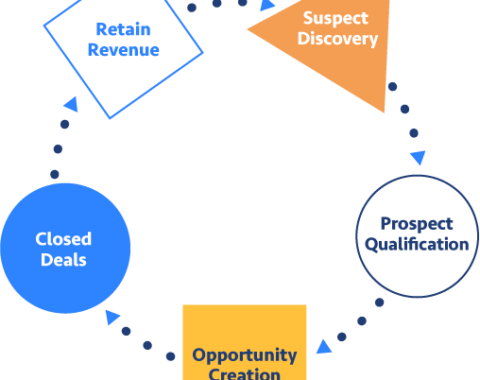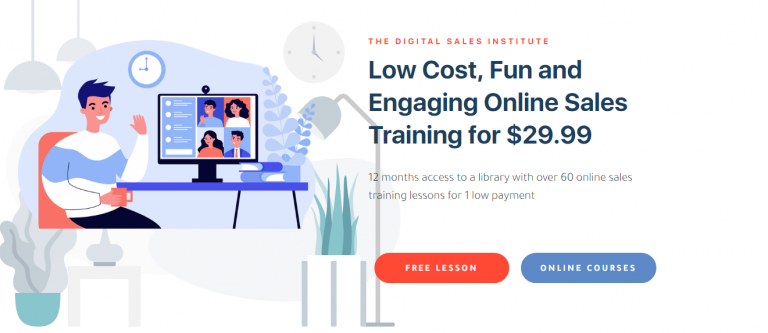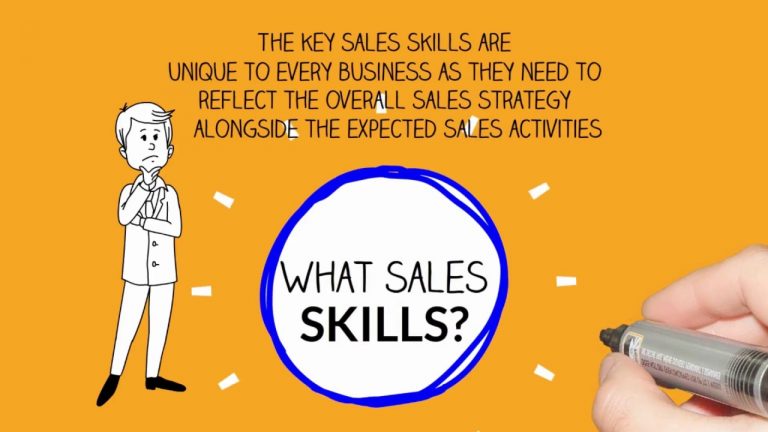Outbound sales prospecting insights that will assist any salesperson to connect and engage with target prospects in their sales activity. This article will help to understand the mechanics of Sales Call Reluctance and to identify the questions that can immediately overcome any fear to picking up the phone and talking with potential customers.
The Digital Sales Institute Sales Prospecting Skills course is based on actual real-world selling experience alongside proven methodologies that teach sales professionals all the skills to research, find, engage, and build relationships with viable prospects in order to keep the pipeline well-stocked and achieve your sales goals.
Today’s customers navigate a hyper-connected, digitally driven world, demanding personalized experiences and value-driven interactions. To thrive in this dynamic environment, sales professionals require a robust set of skills if they are to get the attention of buyers, whether on the phone, in person, or via social media.
At its core, a buying process will include all the considerations, evaluations, and decisions involved in purchasing (or not) a product or service. Every one of us engages in this process in our lives, whether it is to buy a phone, clothes, or a car. Obviously, the complexity of the process will change depending on the value, price, and reason for purchase. The buying process is also known as the buyer’s journey, in that it maps a buyer’s journey through the purchase stages, from recognizing a need to researching possible solutions, determining important decision criteria, evaluating options, and finally making a decision and evaluating results.
Our outbound sales prospecting course isn’t a mere refresh of past strategies; it’s a modern take on what it takes to win new customers. It’s a cumulation of our latest research and proven tactics already implemented successfully in sales organizations.
We will dive deep into the trends and tactics shaping the future of sales prospecting and how buyers want to be approached. We will also dissect the psychological and behavioral forces that influence modern buying decisions, equipping you with the tools to decode customer motivations, open conversations, and anticipate objections before they even surface.
Prospecting is a learned sales skill, and they say that knowing yourself is the first and most important thing that every salesperson must undergo to discover their inner self, their natural disposition, and their innate potential. When a salesperson knows who they are, their core value system and behavioral tendencies, and clearly understands what they want, their key motivational drives, then they will have a much better chance of discovering how to reach their own success, happiness, and personal fulfilment.
In a noisy, cluttered world with an overreliance on inbound sales leads, sales prospecting is regaining its importance as the way to identify and qualify new clients, then move them through the sales funnel. The end goal is to move prospects through the sales funnel until they eventually convert into revenue-generating customers. It is associated with a goal of increasing the customer base of the company and generating new revenue streams.
What Is Outbound Sales Prospecting?
Outbound sales prospecting: the process of searching for potential customers, clients, or buyers in order to develop new business. The end goal is to move prospects through the sales funnel until they eventually convert into revenue-generating customers.
What’s the difference between leads and prospects?
Leads: Potential customers who have expressed interest in our company or services through behaviors like visiting our website, subscribing to a blog, or downloading an eBook.
Prospects: Leads become prospects if they are qualified as potential customers, meaning that they align with the persona of our target buyer. A prospect may also be classified as a potential customer who has limited or no interaction with our company, but they would not be considered a lead.
Key Benefits of Outbound Sales Prospecting Training.
After completing a sales training program, you should be able to:
- Achieve sustainable prospecting success by using a proven prospecting approach.
- Increase prospecting effectiveness by pursuing high-value prospects and keeping the sales pipeline full.
- Gain access to more prospects by using skills and best practices to identify prospecting sources and gain referrals.
- Increase interest by delivering compelling value messages that resonate with prospects.
- Expertly secure and execute successful first meetings with prospects to gain interest and move the opportunity forward.
- Maximize prospecting effectiveness through personal branding, networking, and managing online presence.
Program Objectives of Sales Prospecting Training
Program objectives include:
- Identify common prospect sources and determine the characteristics of a high-value sales prospect.
- Prioritize prospecting efforts through gaining critical sales prospect data.
- Create concise value messaging to pique prospect interest.
- Develop effective qualifying questions to identify high-quality opportunities.
- Effectively make contact with prospects by delivering an effective communication framework.
- Create a strong personal brand that helps ensure a sustainable positive image.
- Recognize in-person and online networking opportunities to increase prospecting efforts
The Digital Sales Institute outbound sales prospecting training course provides in-depth, digitally aware skills to help drive any salesperson to achieve prospecting success. They will build skills in defining target organizations, customer profiles, value propositions, and approaches. Plus, how to leverage the phone, email, and social media. All the real-world and behavioral sales skills to connect and engage with the right prospects.
Lesson 1. The Power of Sales Prospecting.
Lesson 2: Overcoming Prospecting Reluctance.
Lesson 3. Sales Prospecting Steps.
Lesson 4. The Buyer Why’s.
Lesson 5: The Buyers Journey.
Lesson 6: Creating Value Propositions.
Lesson 7: Sales Prospecting Process.
Lesson 8: Preparing to Engage Prospects.
Lesson 9. Overcoming Fear and Obstacles.
Lesson 10: Prospecting Habit Loop.
Lesson 11: The Prescriptive Prospecting Process.
Lesson 12: Keys to Prospecting Success.
Lesson 13. Characteristics of Top Prospectors.
Lesson 14: Sales Prospecting Expert Tips.
Bonus Lesson: Using Email and Social Selling.
The prospects who may not be visible to you could make up as much as 80% of your potential market. They might not know who you are, or they might be working with your competitors, but writing them off for these reasons is limiting your business’s potential.
Outbound sales prospecting will help you gain market share, put you in control of your sales pipeline (making your sales performance predictable), and help you meet and exceed your sales targets. For a prospecting strategy to be effective, it must be consistent, long-term, and strategic.
A lack of patience and unrealistic expectations scuttle far too many prospecting campaigns before they can really bear fruit. Remember, a prospecting campaign will need three to six months to build momentum. Prospecting is the best way to uncover issues. It is the only way to initiate conversations with prospects before they become visible to your competitors. You have what your customers want or need; they just don’t know it yet.

Outbound sales prospecting with the right skills will allow you to delve deeper and reveal much more about potential customers. In our sales prospecting course, we’ll be showing you how to find these potential customers and make yourself more visible to them. They’ll be seeing your messages (often for the first time), and you’ll be building relationships that will translate, in time, to a steady stream of new pipeline.
No more relying on inbound leads, as now that you will be confident in making these calls to ensure a steady stream of potential opportunities. No more hoping that potential customers will find their way to your website. Outbound sales prospecting is going to help you dive beneath the waterline, where you can first see and then reach out to entirely new groups of potential customers, engaging them in two-way conversations that are more personalized than even the most sophisticated and compelling marketing materials ever could be.













